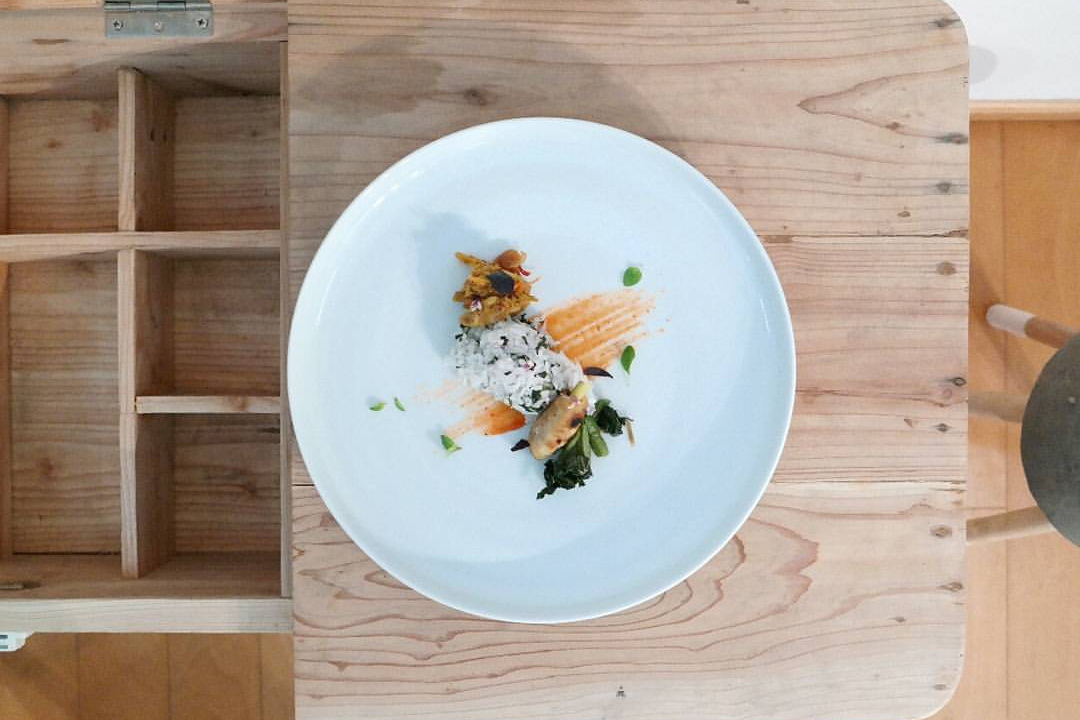
Local rice dish can be more colourful with the help of assorted fresh herbs.
West Java region in Indonesia has an interesting traditional rice cooking technique called liwet. Liwet means cooking rice in a boiling pan until it is half-cooked then steaming it until it is perfectly cooked with fluffy and grainy texture. The result is called nasi liwet.
West Java version of nasi liwet or nasi liwet Sunda is slightly different with nasi liwet from Central Java or nasi liwet Solo. While nasi liwet Solo is boiled in coconut milk, nasi liwet Sunda is boiled in water and herb. It gives denser and richer taste in nasi liwet Solo when nasi liwet Sunda has lighter taste.
There is also a common thing to add ikan teri (whitebait/small anchovy) or salted fish into the nasi liwet Sunda rice mixture in order to add more flavour while nasi liwet Solo has no protein protein aspect inside the rice. To give a pleasant aroma, Indonesian herb such as daun salam (Indonesian bay leaf) and lemongrass are added while boiling nasi liwet Sunda.
Asep, the founder of Herbcik and Warung Langit on Dago Pakar, Bandung, tries to bring Sundanese local wisdom of planting and eating in his garden and restaurant. Nasi liwet becomes one of his favourite items in his restaurant Warung Langit’s menu. However, there is something very unique in his nasi liwet.
“Instead of using usual Indonesian herb, I used mixed Western herbs such as parsley, oregano, basil, and red basil,” said Asep in his latest cooking demo (5/12) which is a part of Pasar Ide event in Jakarta.
Asep’s signature nasi liwet is named Nasi Herbcik. Not only tastes unique and smells good, Nasi Herbcik also pleasant to see as it has colourful look comes from different herbs he used.
“I use herbs from my garden. Indonesian tropical climate with almost constant temperature and sunshine all years even makes herbs plant grow here even better than in the land where it comes from,” said Asep.
The process of making Asep’s Nasi Herbcik is simple. It requires 1 liter of fluffy rice, water, a couple teaspoon of salt, two tablespoon of olive oil or coconut oil and 150 grams mixed herb.
“Fill the pan with rice, and then add water until it is as high as slightly one thumb above the rice. After that, add olive oil and salt then bring the water to boil until the rice absorbs almost all the water,” explained Asep in his demo.
After that, herbs are ready to be added and stirred into the rice, and then the rice has to be steamed for 20 minutes.
“Then, Nasi Herbcik is ready to be served,” said Asep.
Dade Akbar of Warteg Gourmet collaborated with Asep in this cooking demo. After Asep finished cooking the rice, Dade plates the rice with some Balinese side dishes from Koko Bogana.

Plated Nasi Herbcik by Dade Akbar (Photo Courtesy of @warteggourmet)
“Indonesian food is often very honest with its form. However, plating the food in gourmet style that can elevate the dish,” said Dade.
Asep’s works on gardening and cooking can be found in his instagram account @herbcik and @warung_langit while Dade Akbar’s work on turning traditional food into gourmet food can be found in his instagram account @warteggourmet.
Text: Dina Vionetta
Pictures: Dina Vionetta & Dade Akbar (@warteggourmet)
Tags: nasi liwet solo, nasi liwet sunda, nasi liwet, herbcik, warteggourmet